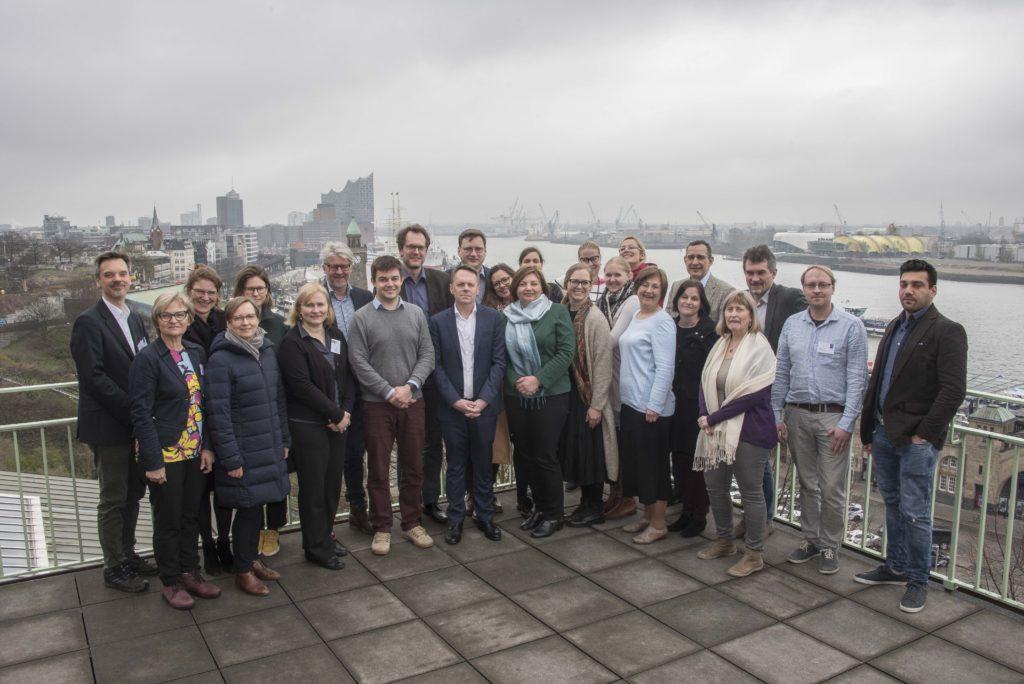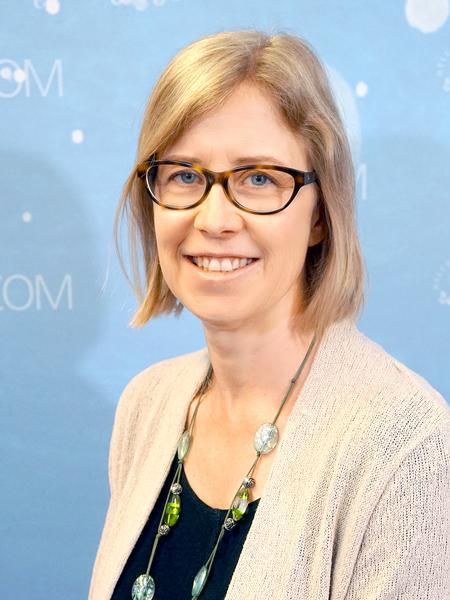HELCOM-VASAB cooperation
HELCOM-VASAB Maritime Spatial Planning Working Group
A joint co-chaired Working Group on Maritime Spatial Planning (MSP) was launched in October 2010 by HELCOM and the Vision and Strategies around the Baltic Sea (VASAB) Committee on Spatial Planning and Development of the Baltic Sea Region (CSPD/BSR). The Working Group was established to ensure cooperation among the Baltic Sea Region countries for coherent regional MSP processes in the Baltic Sea. The decision to set up this group was made at the HELCOM Moscow Ministerial Meeting on 20 May 2010, promoted by the VASAB Ministerial Declaration on 16 October 2009 in Vilnius. The group acts as the Steering Committee for the Policy Area Spatial Planning in the EU Strategy for the Baltic Sea Region (EUSBSR).

More information of the HELCOM-VASAB MSP Working Group can be found here.
Mandate for the joint HELCOM-VASAB Maritime Spatial Planning Working Group prolonged by HELCOM HOD 60-2021 and 85th VASAB CSPD/BSR Meeting in 2021
Work Plan for the joint HELCOM-VASAB Maritime Spatial Planning Working Group , 2022-2024, approved by the VASAB CSPD/BSR in its 88th meeting in December 2022 and the HELCOM Heads of Delegation of EU and EU Member States in a correspondence procedure in February 2023.
The HELCOM-VASAB Baltic Sea Broad–scale Maritime Spatial Planning Principles were adopted by HELCOM and VASAB in the end of 2010, fulfilling the commitment set out in the HELCOM Baltic Sea Action Plan on creating MSP principles.
The following ten principles provide guidance for achieving better coherence in the development of MSP systems in the Baltic Sea Region:
1. Sustainable management
2. Ecosystem approach
3. Long term perspective and objectives
4. Precautionary Principle
5. Participation and Transparency
6. High quality data and information basis
7. Transnational coordination and consultation
8. Coherent terrestrial and maritime spatial planning
9. Planning adapted to characteristics and special conditions at different areas
10. Continuous planning
The Regional Baltic Maritime Spatial Planning Roadmap (2013-2020) was created to accomplish the goal of drawing up and applying maritime spatial plans throughout the Baltic Sea region by 2020 which are coherent across borders and apply the ecosystem approach. Now, the New Regional Maritime Spatial Planning Roadmap 2021-2030, focuses on the shift of the MSP scenario on the BSR, from drawing up of the plans to implementation, monitoring, evaluation and follow-up with subsequent eventual reviewing of the maritime spatial plans (MSPs). The Roadmap takes into account regional priorities, and for Baltic EU Member States, the European context, including the EU Strategy for the Baltic Sea Region and the EU Directive on Maritime Spatial Planning. The New Roadmap was adopted at the HELCOM Ministerial Meeting 2021 and the VASAB CSPD/BSR 85th meeting.
The New Roadmap contains 5 objectives with different actions:
- Implementation of maritime spatial plans builds knowledge base for the new MSP cycle
- Maritime Spatial Planning improves regional policy coherence
- Maritime Spatial Planning contributes to achieving progress towards good environmental status of the Baltic Sea set in the Baltic Sea Action Plan
- Maritime Spatial Planning contributes to sustainable blue economy
- Spatial planning contributes to climate change mitigation, adaptation and increased resilience of the Baltic Sea Region
The New Roadmap also contains Milestones:
- Interim assessment of the progress in the Roadmap implementation (2024-2025)
- Sound basis for an adaptive Maritime Spatial Planning process applying the ecosystem-based approach is built (during 2028)
- Final assessment of the regional MSP framework and achievement of the Roadmap goal and objectives, and Plan for the adoption of regional MSP framework documents (by 2030)
Following the Regional Baltic Maritime Spatial Planning Roadmap 2013-2020, guidelines on the transboundary consultations and cooperation, public participation and ecosystem approach were drafted, adopted and applied in the Baltic Sea. In the New Regional Maritime Spatial Planning Roadmap 2021-2030, the guidelines are meant to be revised and further themes developed to support MSP at the regional level.
The Guideline for the implementation of ecosystem-based approach in MSP in the Baltic Sea area
The Guidelines for the implementation of ecosystem-based approach in MSP in the Baltic Sea area present a first step toward a common understanding of how the ecosystem-based approach can be applied in drawing up a spatial plan for a sea area in accordance with spatial planning legislation in force in the Baltic Sea countries. The Guideline has been prepared and agreed on by the HELCOM-VASAB MSP Working Group and was adopted by the 72nd meeting of VASAB CSPD/BSR on 8 June 2016 and approved by HELCOM HOD 50-2016 on 15-16 June 2016.
The Guidelines on transboundary consultations, public participation and co-operation
Those guidelines cover the following topics:
- consultations between MSP authorities of neighbouring countries and/or those countries directly affected by MSP and the related public participation process that should take place concerning transboundary aspects during the process of drafting a maritime spatial plan.
- cooperation between MSP authorities at pan-Baltic scale on issues affecting most or all of the Baltic Sea and/or the level involving most or all BSR countries as well as the process foreseen to ensure effective stakeholder engagement at a more strategic level.
The Guidelines on transboundary consultations, public participation and co-operation have been prepared and agreed on by the HELCOM-VASAB MSP Working Group and were adopted by the 72nd meeting of VASAB CSPD/BSR on 8 June 2016. The Guidelines were approved by HELCOM HOD 50-2016 on 15-16 June 2016.
The Voluntary guidance for the assessment of cross-border coherence in Maritime Spatial Planning
The Voluntary guidance for the assessment of cross-border coherence in Maritime Spatial Planning was published in January 2022 to enhance a common understanding of the coherence of the Maritime Spatial Plans and subsequently on common criteria for assessing the cross-border coherence. This report is of a purely technical nature and the concept described in the report is being tested on a voluntary basis by the HELCOM Contracting Parties and VASAB Members. The test period will be two years with a follow-up item to be included in the work plan 2022-2024 of the HELCOM-VASAB MSP WG.
THE COVER NOTE
The Guidelines:
- Apply without prejudice to obligations emerging from national and international legislation and do not substitute the obligations and existing standard practice of parties to the Espoo Convention and its SEA protocol;
- Will be reviewed and amended, if needed, based on the experience gathered;
- Refer to the national MSP contact points for the purpose of transboundary consultation and joint planning, as designated by the Baltic Sea countries and listed.
EU Strategy for Baltic Sea Region (EUSBSR)
The European Union Strategy for the Baltic Sea Region (EUSBSR) is a macro-regional strategy, which aims at reinforcing cooperation within the region and promoting a balanced development in the area. The EUSBSR is divided into three objectives which represent the three key challenges of the Strategy: saving the sea, connecting the region and increasing prosperity. The objectives guide an array of Policy Areas which are specific areas for macro-regional cooperation. The Policy Areas are implemented by regional stakeholders through detailed actions and flagship projects.
Policy Area (PA) Spatial Planning consists of two thematic parts, namely maritime spatial planning (MSP) and land-based spatial planning. The policy area seeks to encourage the use of maritime and land-based spatial planning in all member states around the Baltic Sea and develop a common approach for cross-border cooperation.
Within the PA Spatial Planning, with the action “Ensuring coherent maritime spatial plans throughout the Baltic Sea” the EUSBSR has attributed HELCOM and Vision and Strategies around the Baltic Sea (VASAB) a prominent role in promoting maritime spatial planning (MSP) in the Baltic Sea region, as the joint Policy Area coordinators on MSP. The joint HELCOM-VASAB Maritime Spatial Planning Working Group acts as the Steering Committee for the HA Spatial Planning.
The Regional Baltic MSP Roadmap 2013-2020 has guided these efforts in the past. Now, the New Regional Maritime Spatial Planning Roadmap 2021-2030 guides the efforts for the future.
A leaflet of PA Spatial Planning can be downloaded here.
Flagship projects under the EU Strategy for the Baltic Sea Region (EUSBSR) Action Plan contribute to fulfilling the objectives, indicators and targets of the Strategy and are related to the implementation of one or more actions of a specific Policy Area or Horizontal Action. These projects have a macro-regional impact and start from joint initiatives involving partnership from different countries.
Already completed flagship projects under PA Spatial Planning are the Baltic SCOPE (Towards coherence and cross-border solutions in Baltic Maritime Spatial Plans), the PartiSEApate (Multilevel Governance in Maritime Spatial Planning throughout the Baltic Sea Region) projects, and Baltic LINes (Coherent Linear Infrastructures in Baltic Maritime Spatial Plans).
How to become a flagship project?
The HELCOM and VASAB Secretariats, as the co-leaders for PA Spatial Planning, are the contact points for MSP projects interersted in applying for flagship project status under HA Spatial Planning. The VASAB Secretariat serves as the contact point for land based spatial planning projects. Please find more information on how to become a flagship project here.
Letter of committment/support
The Secretariats also serve as the the contact points for letters of commitment/support for MSP and land based project applying for financing. A letter will be issued by the Chairs of the HELCOM-VASAB Maritime Spatial Planning Working Group if the MSP related project proposal is considered relevant against PA Spatial Planning.
Contacts

Penina Blankett
Co-Chair (HELCOM)
Ministry of the Environment, Finland
penina.blankett@gov.fi

Kai Trümpler
Co-Chair (VASAB)
Federal Maritime and Hydrographic Agency – BSH, Germany
kai.truempler@bsh.de

Jan Schmidtbauer Crona
Vice-Chair (HELCOM)
Swedish Agency for Marine and Water Management
jan.schmidtbauer.crona@havochvatten.se

Lotta Ruokanen
Professional Secretary
HELCOM Secretariat
lotta.ruokanen@helcom.fi
Tel: +358 40 5050 392

